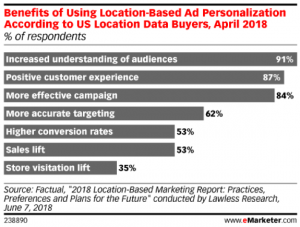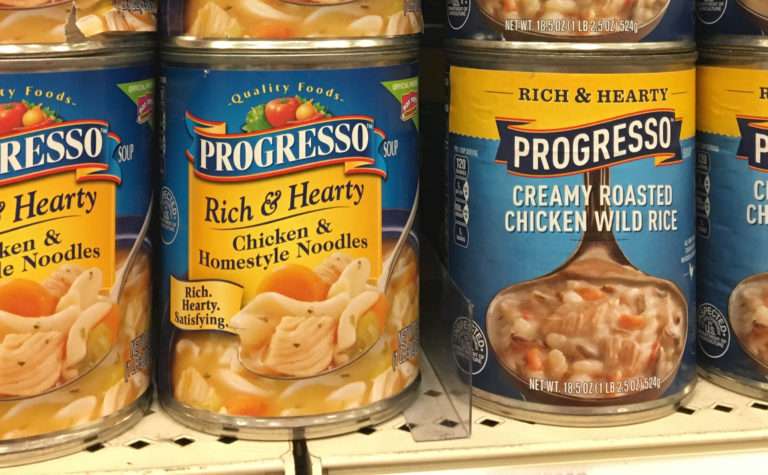Nov 12, 2019
Location-Based Food Marketing
In a world of smartphones, it is important to stay up to date on all of the marketing trends. Location-based marketing – which includes food marketing – is a method that is becoming popular due to the number of people that use smartphones. Smartphones can give information about customers’ locations, so companies use this information to their advantage when it comes to marketing. According to eMarketer, it was estimated that marketers would spend $26.5 billion in mobile location-targeted marketing in 2019. There are multiple types of location-based marketing and a lot of benefits.

Types of Location-based Marketing
Geofencing: This is probably the most used tactic when it comes to location-based marketing. This is when a person opts in to share their location via GPS, with an app, and enters an area that is “geofenced.” Once they enter this area, they might receive a text message, push notification, or advertisements while using apps in that location. This is used with Facebook, Instagram, and even Snapchat. So, if you have ever noticed an advertisement while scrolling through Instagram for a place around you, it is because that company is using the Geofencing tactic.
Local Search Marketing: Local Search Marketing is a form of search engine optimization that can allow local companies or businesses to show up in search results. The “… near me” searches use local search marketing. Companies will provide their location information so that they come up as a top result in these searches.
Geotargeting: Geotargeting uses IP addresses to target current or past locations from customers. This is almost a broader version of geofencing because it typically covers a larger area and is not as precise. It also is more demographic, behavior, and interest-based than geofencing.
Beaconing: Beaconing is the most narrow of location-based marketing tactics. It is a small, physical object, or beacon, that uses Bluetooth to receive location data from nearby devices. These are common inside of buildings or stores or more remote areas.
Benefits
Get to Know Your Customers Better: By using location-based marketing, companies can learn more about their customers. Companies can see how likely it is for customers to come in based on their location and even know if they use the coupons offered.
Positive Customer Experience: Customer experience is essential when it comes to marketing. You don’t want to annoy them with ads they feel are irrelevant. With location-based marketing, you are providing your customers with relevant advertisements and notifications.
Low-cost and Highly Targeted: Compared to many traditional marketing methods, location-based marketing is relatively low cost. It is also highly targeted, only hitting customers in a very specific geographic area.
High Conversion Rates: When it comes to turning impulses into sales, location-based marketing is a great move. This means that customers will see the advertisement or notification and decide to make the purchase.
Increase in Sales: Along with high conversion rates, sales also increase.
Increase in Store Visitation: When customers are reminded of stores with advertisements or notifications, they might decide to go check the product out. Because of this, store visitations increase as well.

What you should do
Location-based marketing is getting more and more popular and more and more effective. It is a strategy that all companies should look into with its many types and many benefits. In a time of mobile devices, this might be the best way to get your product out there. Compared to traditional marketing, location-based marketing is a little more budget-friendly, so you will not be breaking the bank. Make a Facebook ad or a Snapchat filter for your product. This is a great way to reach a large audience and draw attention to your product.
To learn more about marketing strategies or if you have any questions, please reach out to the NewPoint team. If you are interested in more food marketing topics, please visit our Food for Thought page or check out NewPoint’s Patrick Nycz’s book: Moving Your Brand Up the Food Chain.






